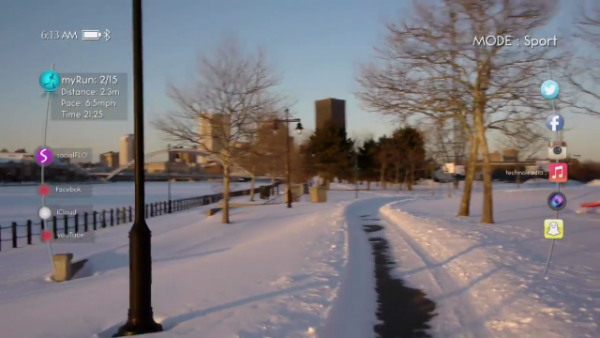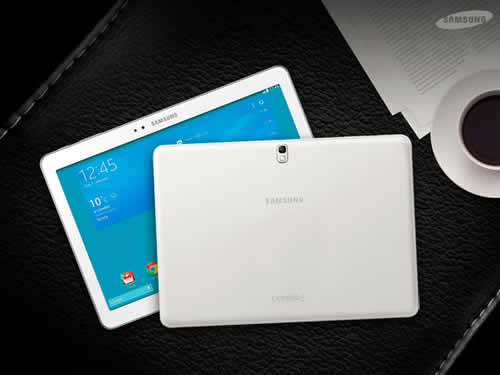
While Apple releases just one or two tablets each year, Samsung has been positively flooding the market with them in all different shapes and sizes. Despite that the South Korean giant has never hit quite the same heights with its tablet sales as it has with its smartphones and the iPad has remained the slate to beat.
But now Samsung’s bringing out a new ‘Pro’ range of tablets, including the Samsung Galaxy Tab Pro 10.1. It’s a top tier device, but can it match up to the iPad Air? Read on to find out.
Samsung Galaxy Tab Pro 10.1 vs Apple iPad Air – Build quality
At first glance the
Galaxy Tab Pro 10.1 seems a lot like the
Galaxy Note 10.1. Aside from the fact that they’re both 10.1 inches they also both have a faux-leather back, which looks good but feels like plastic. The real difference comes when you hold the Pro 10.1 though, because at just 469g (or 477g for the 4G version) it’s remarkably light for a slate of this size, making it a joy to carry around and use for extended periods. Its dimensions of 243.1 x 171.4 x 7.3mm are perhaps slightly bigger than they need to be, thanks to its fairly wide bezels, but it’s impressively slim.
The
Apple iPad Air is in a whole other league of quality though as it has an aluminium back which both looks and feels far nicer than the Pro 10.1’s back. Its dimensions of 240 x 169.5 x 7.5mm are similar though and it’s actually marginally thicker. One of its biggest selling points is its weight, which at 469g (or 478g for the 3G / 4G) made it a lot lighter than its competition when it launched, but the Pro 10.1 has come along now and it’s just as light. Still, the iPad Air’s aluminium body ensures that it has the better build quality overall.
Samsung Galaxy Tab Pro 10.1 vs Apple iPad Air - Display
The Samsung Galaxy Tab Pro 10.1 has a 10.1 inch 2560 x 1600 display with a pixel density of 299 pixels per inch, while the Apple iPad Air has a 9.7 inch 1536 x 2048 screen with a pixel density of 264 pixels per inch.
Both screens are fantastically high quality with sharp images, great contrast, rich colours and good viewing angles. But as the Galaxy Tab Pro 10.1 is both larger and higher resolution we have to give it the edge. Not to mention the fact that it’s more of a widescreen format than the iPad Air, making it ideal for media.
Samsung Galaxy Tab Pro 10.1 vs Apple iPad Air - Power
The Galaxy Tab Pro 10.1 has an Exynos 5 octa-core processor, with four cores clocked at 1.9 GHz and the other four clocked at 1.3 GHz, while the 4G LTE version has a 2.3 GHz quad-core Snapdragon 800 processor and both have 2GB of RAM. Whichever option you go for it’s enormously powerful, though it’s not quite Samsung’s most powerful slate as the Galaxy Note 10.1 2014 has more RAM.
The iPad Air on the other hand is Apple’s most powerful tablet, thanks to a 1.3 GHz dual-core Apple A7 processor and 1GB of RAM. On paper that’s a lot less, but Apple products have always punched above their weight and the iPad Air is no exception. The reality is that there’s no discernible performance difference between the two slates, as both can handle games, apps, media and web browsing with ease.
Samsung Galaxy Tab Pro 10.1 vs Apple iPad Air - Camera
The Samsung Galaxy Tab Pro 10.1 has an 8 megapixel main camera with autofocus and an LED flash. It’s not the best camera around, but it does a pretty good job and we can’t imagine too many people using a ten inch tablet as their main camera anyway. It also has a 2 megapixel front facing camera which works reasonably well as a webcam and can shoot 1080p video at 30fps.
The Apple iPad Air has a slightly worse 5 megapixel camera. The quality is still reasonable but the main disadvantage it has is that there’s no flash, so it’s terrible in low light. It also has a 1.2 megapixel front facing camera and can shoot 1080p video at 30fps.
Battery life, memory and connectivity
The Galaxy Tab Pro 10.1 has an 8220 mAh battery while the iPad Air has a slightly larger 8820 mAh battery and both are rated for 10 hours of multimedia use. With moderately heavy use they’ll both last through a day with ease and both are among the best tablet batteries out there.
The Tab Pro 10.1 comes with a choice of 16 or 32GB of storage, but it also has a microSD card slot which supports cards of up to 64GB, giving it up to 96GB of storage overall. The iPad Air has more potential storage with in 16, 32, 64 and 128GB flavours, but none of the models support microSD cards.
Both tablets support Bluetooth 4.0, Wi-Fi, 3G and 4G LTE, while the Galaxy Tab Pro 10.1 also has an infrared port. However neither of them support NFC.
Samsung Galaxy Tab Pro 10.1 vs Apple iPad Air - Conclusion
The Samsung Galaxy Tab Pro 10.1 and Apple iPad Air are remarkably well matched. Both are enormously powerful, very light and have great screens and strong battery life. The 16GB WiFi-only models are also priced similar - with Apple's tablet costing £399 and Samsung's tablet will be available to buy for around £419.
Both devices also have great software, as the iPad Air runs iOS 7, which looks good and is incredibly easy to use, while the Galaxy Tab Pro 10.1 uses Samsung’s beautiful new Magazine UI, which brings social network updates, news and other features straight to your home-screen.
It’s incredibly tough to pick an overall winner - it depends on whether you prefer the iPad Air's better build quality, or the Galaxy Tab Pro's higher-resolution wide-screen display and superior camera. One other thing to consider is that the 128GB iPad Air costs a whopping £750, while a 64GB microSD card can be added to the Galaxy Tab PRO 10.1 for around £40.
On balance we'd just give the edge to Samsung's Galaxy Tab PRO 10.1, but both devices are a dream to use and are the two best 'large-screened' tablets that money can buy.
*Samsung's Galaxy Tab Pro 10.1 is yet to be released in the UK, but it's set to land in stores next month (March 21st)

 While Apple releases just one or two tablets each year, Samsung has been positively flooding the market with them in all different shapes and sizes. Despite that the South Korean giant has never hit quite the same heights with its tablet sales as it has with its smartphones and the iPad has remained the slate to beat.
While Apple releases just one or two tablets each year, Samsung has been positively flooding the market with them in all different shapes and sizes. Despite that the South Korean giant has never hit quite the same heights with its tablet sales as it has with its smartphones and the iPad has remained the slate to beat.









